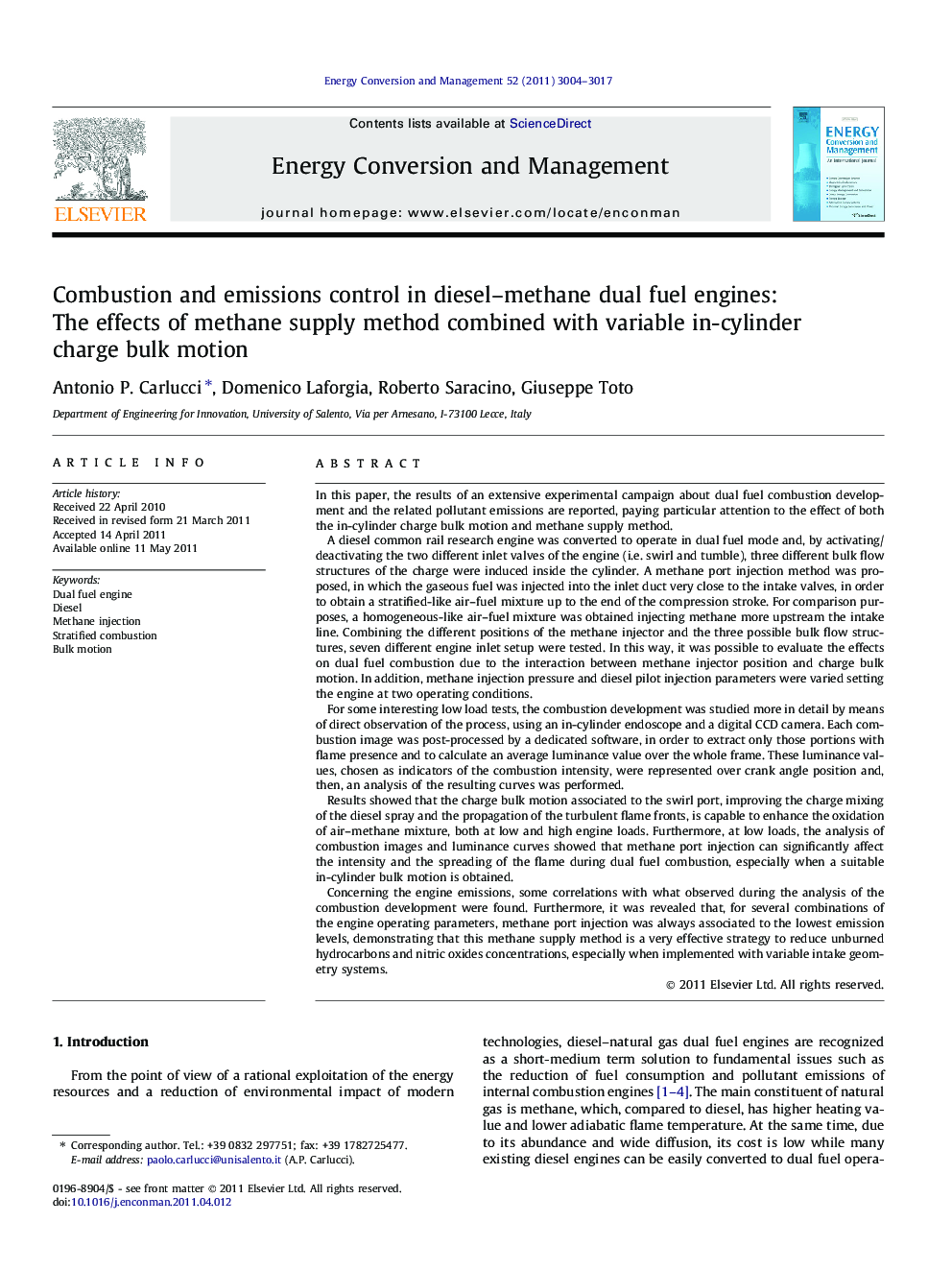| Article ID | Journal | Published Year | Pages | File Type |
|---|---|---|---|---|
| 766057 | Energy Conversion and Management | 2011 | 14 Pages |
In this paper, the results of an extensive experimental campaign about dual fuel combustion development and the related pollutant emissions are reported, paying particular attention to the effect of both the in-cylinder charge bulk motion and methane supply method.A diesel common rail research engine was converted to operate in dual fuel mode and, by activating/deactivating the two different inlet valves of the engine (i.e. swirl and tumble), three different bulk flow structures of the charge were induced inside the cylinder. A methane port injection method was proposed, in which the gaseous fuel was injected into the inlet duct very close to the intake valves, in order to obtain a stratified-like air–fuel mixture up to the end of the compression stroke. For comparison purposes, a homogeneous-like air–fuel mixture was obtained injecting methane more upstream the intake line. Combining the different positions of the methane injector and the three possible bulk flow structures, seven different engine inlet setup were tested. In this way, it was possible to evaluate the effects on dual fuel combustion due to the interaction between methane injector position and charge bulk motion. In addition, methane injection pressure and diesel pilot injection parameters were varied setting the engine at two operating conditions.For some interesting low load tests, the combustion development was studied more in detail by means of direct observation of the process, using an in-cylinder endoscope and a digital CCD camera. Each combustion image was post-processed by a dedicated software, in order to extract only those portions with flame presence and to calculate an average luminance value over the whole frame. These luminance values, chosen as indicators of the combustion intensity, were represented over crank angle position and, then, an analysis of the resulting curves was performed.Results showed that the charge bulk motion associated to the swirl port, improving the charge mixing of the diesel spray and the propagation of the turbulent flame fronts, is capable to enhance the oxidation of air–methane mixture, both at low and high engine loads. Furthermore, at low loads, the analysis of combustion images and luminance curves showed that methane port injection can significantly affect the intensity and the spreading of the flame during dual fuel combustion, especially when a suitable in-cylinder bulk motion is obtained.Concerning the engine emissions, some correlations with what observed during the analysis of the combustion development were found. Furthermore, it was revealed that, for several combinations of the engine operating parameters, methane port injection was always associated to the lowest emission levels, demonstrating that this methane supply method is a very effective strategy to reduce unburned hydrocarbons and nitric oxides concentrations, especially when implemented with variable intake geometry systems.
► We studied dual fuel combustion in diesel engines. ► Bulk flow structure of in-cylinder charge and methane supply method were investigated. ► Swirl charge motion is capable to enhance air–methane mixture oxidation at low loads. ► Methane port injection is capable to reduce unburned hydrocarbons and nitric oxides.
